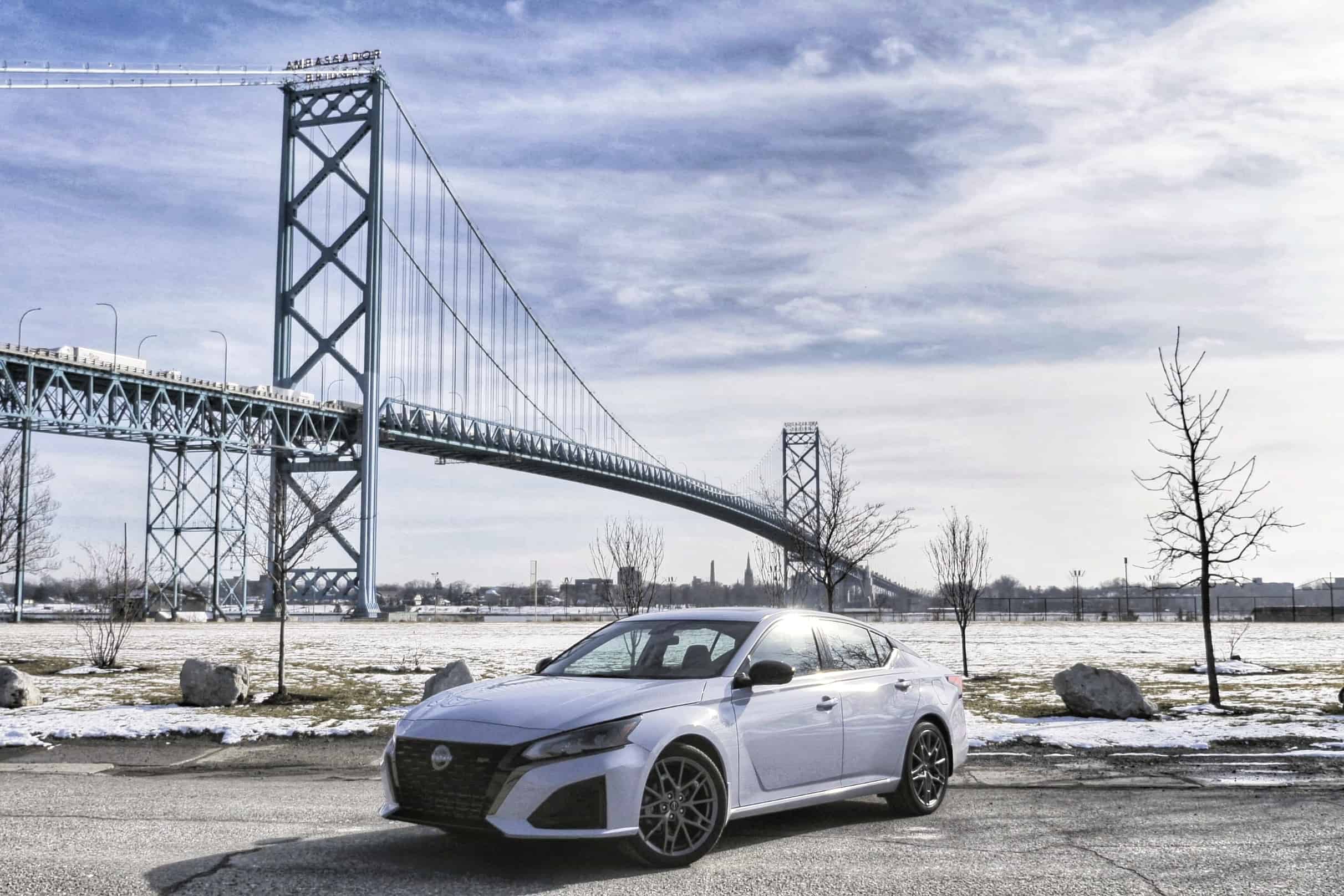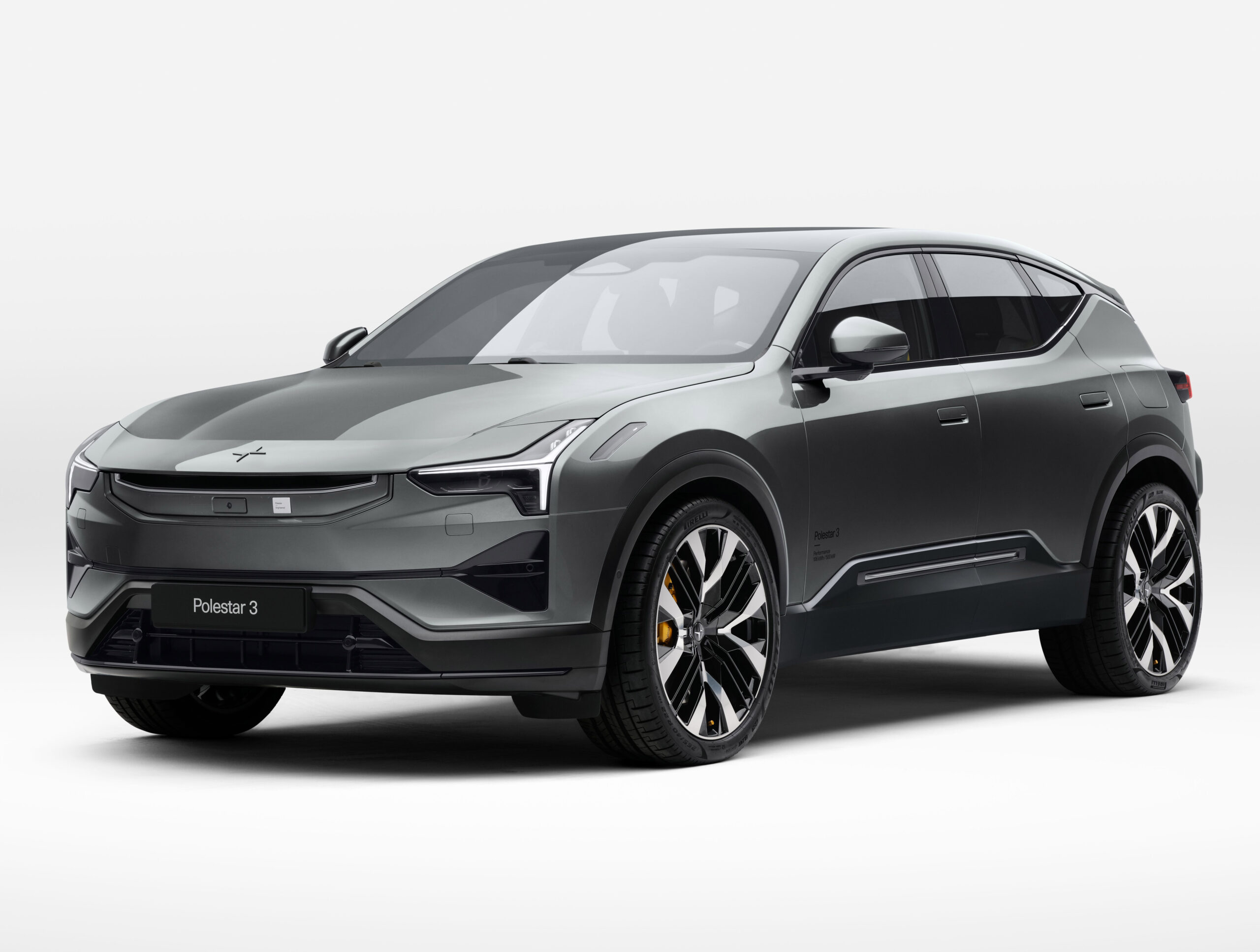

The 2023 Nissan Altima with the brand’s Variable Compression Turbocharged 4-cylinder engine is a compelling alternative to the Japanese competition, but has one major flaw that makes it a little more annoying to live with than Accord or Camry – the transmission. Is that a deal-breaker, though?
The Altima has received a minor refresh for 2023. The changes are mainly consolidated to the front-end, where the V-Motion grille has gotten both larger and less pronounced. The SR trim I tested darkens the chrome surround and pairs the darker theme well with the white paint. I think the Altima could definitely benefit from some of the two-tone paint options of the smaller Sentra, considering it does feature Nissan’s signature floating-roof motif as well. The only problem with the Altima’s floating roof is that, unlike the Sentra and Versa sedans, it looks like designers added it last-minute. The fact that Nissan doesn’t offer a panoramic moonroof in our market further drives that point home, as it looks like something is missing.
The Altima is one of the longer choices in the segment, and the 19″s wheels on this trim fill the wheel wells nicely. All of the body lines are sharp and taught, though I think the overall shape could benefit from a few curvier edges. Out back, the changes for 2023 are pretty minimal. The lower fascia/diffuser was redesigned to better integrate the sporty dual exhaust ports. The taillights are only partial-LED, with the tun signals and reverse lights being incandescent.

Inside, the Altima receives a brand new 12.3″ infotainment screen running the latest Nissan Connect software. It is Google-based and uses a very similar layout to Toyota’s Audio Multimedia system and Stellantis’ UConnect 5. Wireless Apple CarPlay is standard, but wireless Android Auto is only available on upper trims. It works seamlessly no matter what, and the Bose audio system is clean and crisp with a tasteful amount of bass.
Otherwise, the interior feels very solidly constructed, with no rattles or creaks to be heard anywhere. The materials are also of high quality, with enough soft-touch points to offset the hard stuff, but that’s typical in this segment. The steering wheel is heated and has a flat bottom and paddle shifters on the SR trim, but the front seats are only heated, no ventilation is available on any trim. While these are Nissan’s NASA-inspired Zero Gravity seats, I did not find them to be as comfortable in the Altima as they were in the Pathfinder. Make sure to always sit in a car before buying it…

Second-row accommodations are generous, with gobs of legroom and enough headroom for me at 5’9″, though taller folks may start to hit the ceiling. Trunk capacity comes in at 15.4 cubic feet, which is right at the segment average. The second row can fold down 60/40 to expand storage.
Under the hood of this Altima is the company’s Variable-Compression Turbo engine, a 2.0L 4-cylinder that produces 236 peak horsepower and 267 lb.-ft. of torque when fed with regular fuel. If you decide to splurge on premium, those numbers jump to 248 and 273, respectively. When not relying on the compression ratio that will get you to those figures, the ratio increases to help you manage a combined 29 mpg via a 16.2-gallon fuel tank.
If you want to save some money up front, experience better fuel economy, and have access to the option of all-wheel drive, then you need to step down to one of the lower trims (save for the base ‘S’ trim). Those are powered by a naturally-aspirated 2.5L 4-cylinder that puts out 188 horsepower and 180 lb.-ft. of torque when mated to front-wheel drive. The all-wheel drive models actually lose some power – 182 horsepower and 178 lb.-ft. of torque is all you get. Combined fuel economy is rated at 32 mpg for the former, 30 for the latter.
What do both engines have in common? The CVT transmission. More on that in a bit.
The Altima is a very pleasant place to be out on the road. Unless you are doing 0-60 acceleration runs or trying to pass someone at city speeds, the CVT acts pretty discreetly. When it is time for those aggressive moves, things gets a little interesting. In my testing, this Altima took 6.3 seconds to get to 60 mph, meaning there are definitely faster cars in the segment, the new Honda Accord not being one of them. Also keep in mind, the roads in Michigan were wet from a recent snow when I had the car, so you will likely be able to beat my time in warmer climates. 6.3 seconds is quick enough, but the the transmission does not like to accelerate from a stop.
When you floor the VC-Turbo, there’s always a second or two of delay where the car has some shyness to overcome. Then, it finally decides to give you that oomph you’re looking for but is never good at deciding whether to artificially shift or drone like a true CVT. It’s this inconsistency that makes the Altima frustrating to drive, as it brings down the car’s overall exemplary refinement levels. The paddle shifters do respond relatively quickly to your inputs if you want to force the car to shift your way. The transmission still has a mind of its own, though, so if it doesn’t think you should be in that simulated 4th gear, it is going to shift out.
The brakes are also impressive in terms of smoothness and pedal feel. Considering the wet roads, the 135 feet it took to get from 60 mph back to 0 is a little long but makes sense. I don’t really have any complaints with them, otherwise. When it comes to handling and driving the car more spiritedly, the Altima really enjoys being tossed around town. The chassis itself is very firm and rigid, feeling almost German-like compared to the other Japanese and Korean competitors. The whole structure feels well screwed-together, as do the materials and pieces inside. You never hear any creaking, bending, rattling, etc.
The steering is another interesting area for the Altima. The effort becomes heavier the faster you drive, but around town, it’s pretty lightweight. There’s always a tiny bit of communication coming from the road, but it’s not as talkative as the late Mazda6 sedan. I measured 55 decibels in this cabin at 50 mph, which is properly hushed when compared to some of the competition. There’s a tiny bit of road noise to be heard, but wind noise is well-subdued. Finally, the VC-Turbo works its magic when it comes to fuel economy. I’ve averaged 33 mpg on my Detroit-metro test loop.
The 2023 Altima starts at $26,385 for a front-wheel drive S trim and the naturally-aspirated 2.5L 4-cylinder. If you want all-wheel drive, it’s only available with this engine on SV, SR and SL trims, meaning you’ll need to spend at least $28,885 to get it. If it’s the VC-Turbo you want, that is only available on the SR trim without all-wheel drive and starts at $36,285 before adding fancier paint for $395. This is the new top trim for Altima, no Platinum trim or fancier SL trim with the turbo, so looking at it from that lens shows a few gaps in its resume. A full-LCD instrument cluster is not available, nor is a larger panoramic moonroof or ventilated front seats. Adaptive cruise control is not standard equipment on the base Altima, though you’ll find it on the base model of most if its competitors.
Bottom line, the Accord is just as good as the new Honda Accord when it comes to driving dynamics and comfort. It’s perhaps even better, depending on who you talk to. Models with this VC-Turbo will blow the fastest Accord out of the water, but a few content-related omissions and a mismatched transmission bring it back down. Nevertheless, I was pleasantly surprised by the Altima’s overall package and would definitely recommend it if you prefer a more Germanic driving feel and a good balance of fuel economy/performance. Would a hybrid be nice? Yes. Would a traditional automatic pair much more sweetly with this engine? Absolutely. Would I pay the extra money anyway to get this kind of power? Yeah, I think I would.



